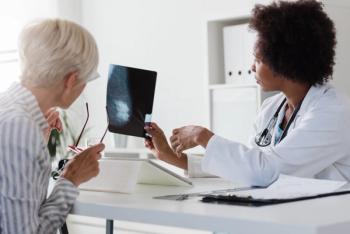
USPSTF updates recommendations on medication use for breast cancer risk reduction
The US Preventive Services Task Force (UPSTF) recently released an updated recommendation on medications for risk reduction of primary breast cancer and which patients would benefit most from a prescription.
The US Preventive Services Task Force (
The USPSTF recommends that clinicians offer to prescribe risk-reducing medications such as tamoxifen, raloxifene, or aromatase inhibitors to women who are at increased risk for breast cancer and at low risk for adverse medication effects. However, the USPSTF recommends against routine use of these risk-reducing medications in women who are not at increased risk for breast cancer. These recommendations apply to asymptomatic women 35 years and older, including those with previous benign breast lesions on biopsy (such as atypical ductal or lobular hyperplasia and lobular carcinoma in situ.
The guidance is based on a review of evidence from 25 good- and fair-quality studies of 18 different risk stratification models that reflect experience in more than 5 million indivduals and were designed to identify women who could potentially benefit from risk-reducing medications for breast cancer. The USPSTF also reviewed evidence from 10 trials on the effects of risk-reducing medications for breast cancer.
The USPSTF also found convincing evidence that available risk assessment tools can predict the number of cases of breast cancer expected to develop in a population. However, these tools perform modestly at best in discriminating between individual women who will or will not develop breast cancer over time. Therefore, the net benefit of taking medications to reduce risk of breast cancer is larger in women who have a greater risk for developing breast cancer.
Risk-reducing medications were found to provide at least a moderate benefit in reducing risk of invasive estrogen receptor (ER)-positive breast cancer in postmenopausal women at increased risk for breast cancer. Both tamoxifen and raloxifene can reduce risks of some types of skeletal fractures, independent of risk of breast cancer.
Although there are risk-reduction benefits to taking these medications, the USPSTF notes that they are not without potential harms. Tamoxifen and raloxifene both increase risk of venous thromboembolic events (VTEs), although tamoxifen increases risk more than raloxifene, and the potential for harm is greater in older woman than in younger women. There was also adequate evidence that tamoxifen, but not raloxifene, increases risk of endometrial cancer in women with a uterus. Aromatase inhibitors carry a small to moderate risk of potential harms. These include vasomotor and gastrointestinal symptoms, musculoskeletal pain, and possible cardiovascular events. Ultimately, though, the USPSTF concluded that the potential harms outweigh the benefits for women not at increased risk for breast cancer.
Newsletter
Get the latest clinical updates, case studies, and expert commentary in obstetric and gynecologic care. Sign up now to stay informed.
















